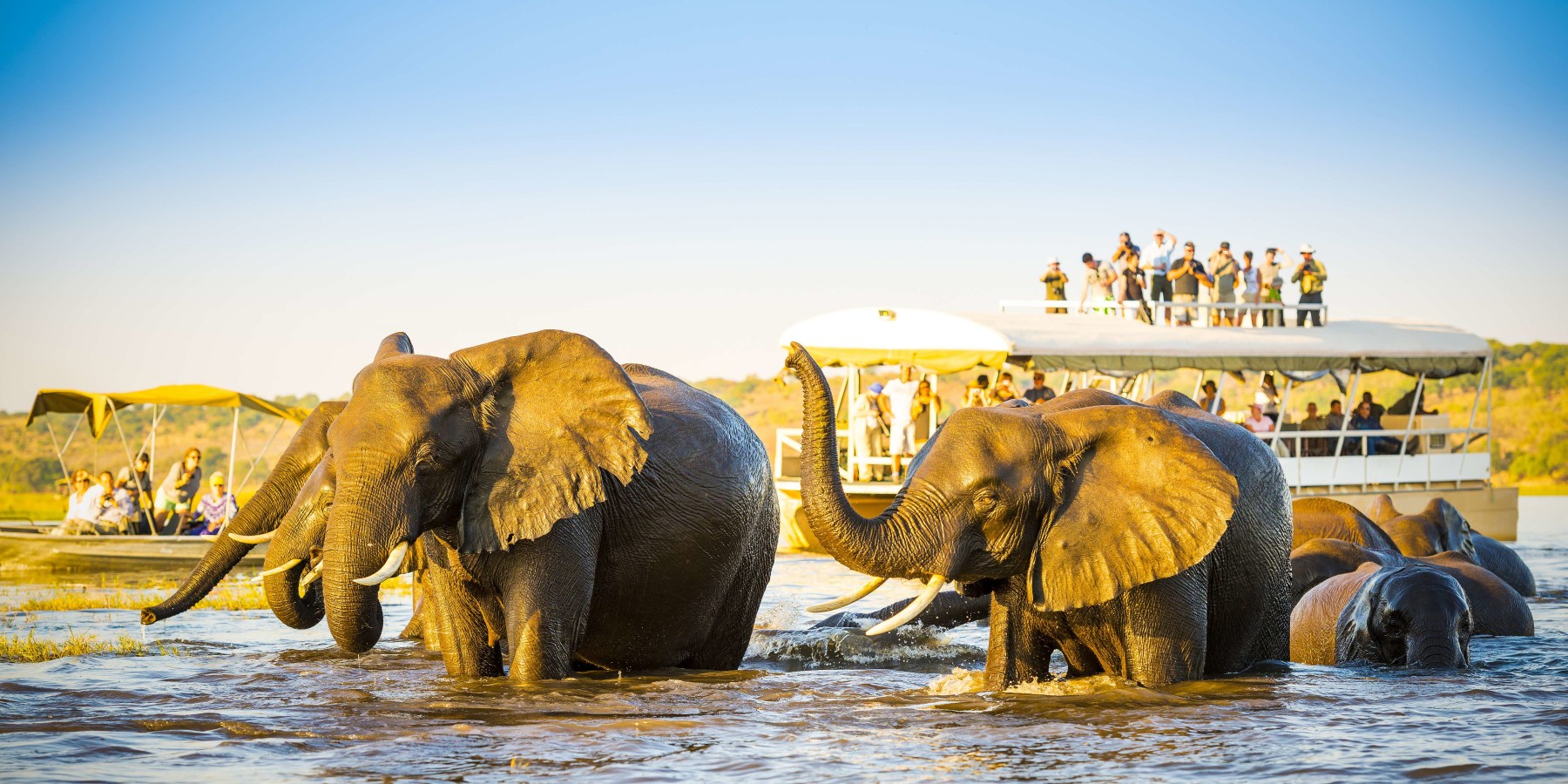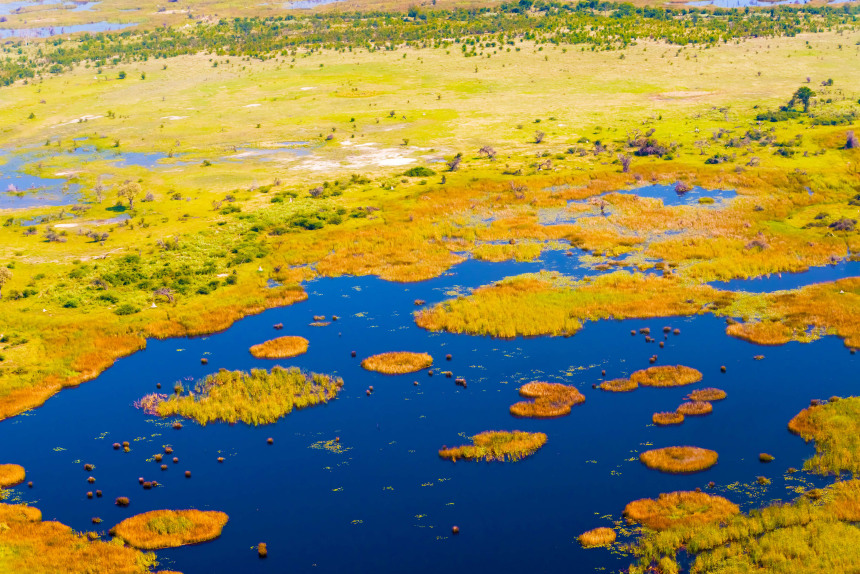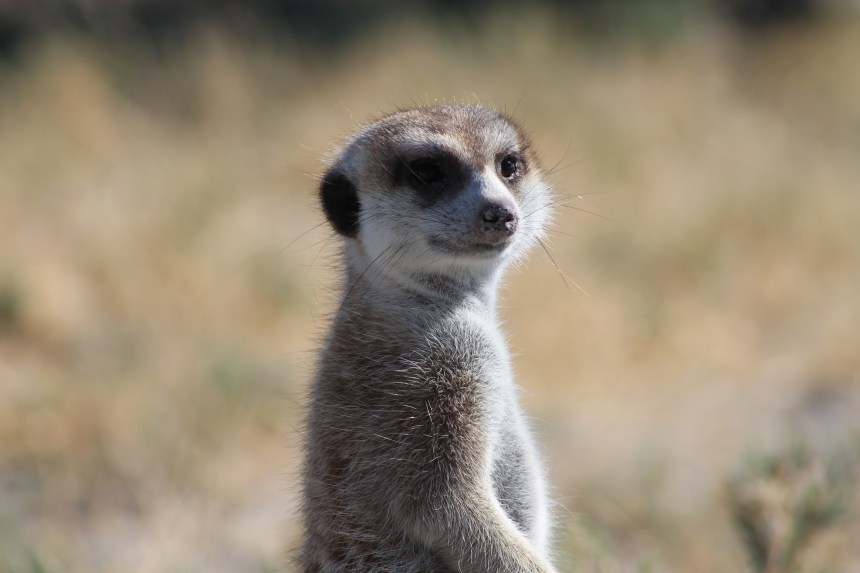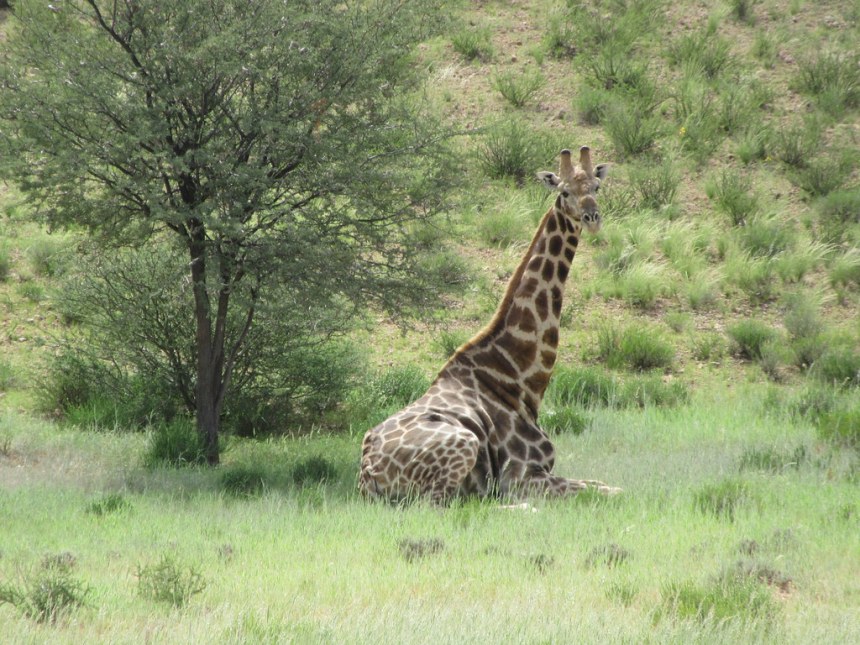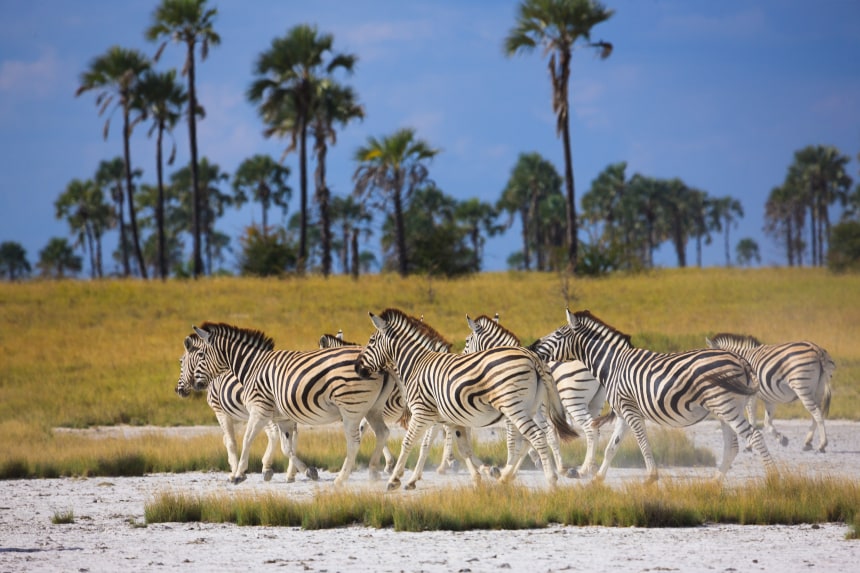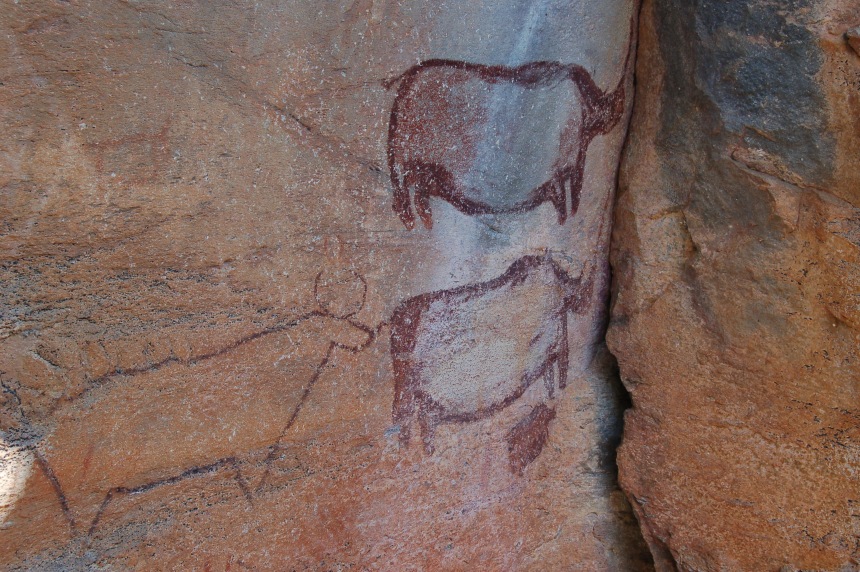| 6 mins read
Ross Cameron
Despite being one of the flattest countries on earth, Botswana is home to an astounding variety of landscapes. The never-ending sands of the Kalahari Desert blanket the southern reaches of the country while the northern regions are dominated by the vast inland wetlands created by the Okavango and Linyanti rivers. Given this, the safari experience in Botswana is unlike any other, as visitors can get close to Africa’s iconic wildlife in grasslands, deserts, and watery deltas.
Chobe National Park
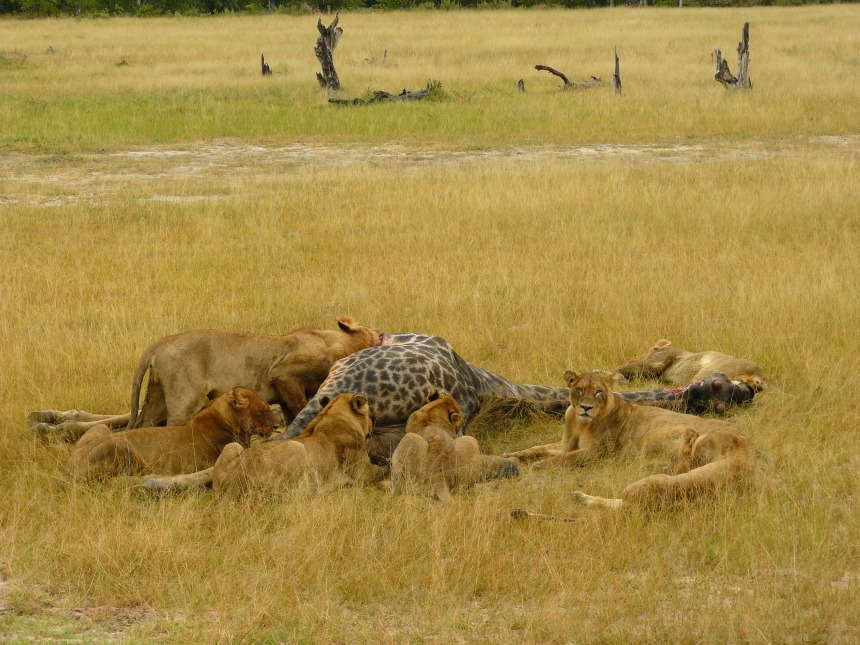
Beyond the iconic waterfront, the Linyanti Marshes are a highlight of the park famed for their stunning concentration of African wild dogs and, given their remoteness, the heart-racing night drives to get there for sunrise.
Savuti is best known for its dense concentration of predators, including a pride of lions that have unusually adapted to hunt elephants. These areas can be explored in self-drive camping tours or through organized excursions from luxury lodges that ooze safari history.
The Okavango Delta
In the Okavango, the Moremi Game Reserve has a split personality of dry islands rising between vast swathes of riverine lagoons. The most iconic of these islands, Chief’s Island, which was once the hunting ground of a local tribal leader, becomes a jaw-dropping showcase of Botswana’s wildlife as the surrounding water rises. One of the Okavango’s hidden gems is traditional mokoro canoes, which guide visitors through the delta’s labyrinth of lagoons and are piloted by expert Moremi Game Reserve tour guides. These Mokoro trips bring visitors up-close to the delta’s dazzling birdlife and within a safe distance of hippos, which often create trails through the dense reeds known as ‘hippo highways’.
For a bird’s eye view of the UNESCO World Heritage-listed Okavango, hot air balloon safaris can be truly breath-taking, especially during sunrise. These are one of the Okavango’s most unforgettable experiences, as visitors get the rare opportunity to fly over the world’s largest inland river delta and survey the enchanting flooded landscape.
Central Kalahari Game Reserve
For a safari experience on terra firma, the Central Kalahari Game Reserve offers vast expanses of pristine desert, which can be explored via self-drive camping tours or through trips led by park guides. Roughly the size of Denmark, the Central Kalahari Game Reserve is one of Africa’s largest protected spaces and is home to magnificent black-maned Kalahari lions and defined by a beguiling sense of remoteness. The reserve also gives visitors the opportunity to get personal with one of Africa’s most beloved animals, the meerkat. These inquisitive animals are more than happy to use humans as lookout posts to watch for on-coming predators. Remarkably, meerkats are also one of the region’s hardiest animals, as they can eat poisonous scorpions and are immune to venomous snakes.
Kgalagadi Transfrontier Park
Further south and straddling the border with South Africa, the Kgalagadi Transfrontier Park is home to vast herds of wildebeest, springboks and other grazing animals alongside a full suite of predators. The Kgalagadi offers a quintessential desert experience with towering sand dunes that shift with the winds and extremes of temperature that can vary between -10°C at night and nearly 50°C at midday. For an unforgettable desert experience, visitors to the Kalahari can take a safari walk with indigenous San tribesmen, semi-nomadic people that seasonally move for the best water supplies, hunting, and foraging. Given their unrivaled knowledge of the Kalahari, a walk with the San offers insights into their fascinating culture and a chance to see their incredible tracking skills first hand.
Makgadikgadi Pans National Park
Makgadikgadi Pans National Park is one of Botswana’s most unique environments. Entirely surrounded by the Kalahari, the park encompasses vast saltpans, which form an otherworldly lunar landscape. Makgadikgadi is at its most spectacular between December and April when thousands of greater and lesser pink flamingos flock to the dried-up salt lakes to breed and lay upwards of 100,000 eggs in the mineral-rich soil. A highlight of the park is a helicopter safari high above the mating flamingos, which gives visitors an expansive view of the sea of pink below. The park is also home to an array of other bird species year round, including elusive African fish eagles and elegant wattled cranes.
Tsodillo Hills
While wildlife is undoubtedly Botswana’s main draw, the country also has an enigmatic history that is best seen at the UNESCO World Heritage-listed Tsodillo Hills. The colorful sheer rock-faces of the hills are covered in a patchwork of more than 4000 pre-historic rock paintings, which have led to the hills being called ‘the Louvre of the Desert’. While the paintings are hard to accurately date, archaeologists estimate that the region has been a center for humans for around 100 000 years. Today, the hills remain a site of great spiritual significance for the San people. When exploring the mesmerizing rock art, be on the lookout for the Tsodilo gecko, which has striking yellow markings and is unique to the hills.
“Over the past decade, Ross Cameron has traveled extensively across Europe, Southeast Asia, North America, North Africa, and the post-Soviet space. As someone who has a real passion for these regions of the globe, he is able to offer an expert opinion that highlights the best off the beaten track destinations.”
Image Details and Licenses:
Chobe National Park: https://images.app.goo.gl/JFN2ATt6VotRR3ED9 (Gorgo), Kgalagadi Transfrontier Park: https://flic.kr/p/RtXq8Q (Amanderson2, CC BY 2.0), Tsodilo Hills: https://flic.kr/p/5hEJ61 (Joachim Huber, CC BY-SA, 2.0)

